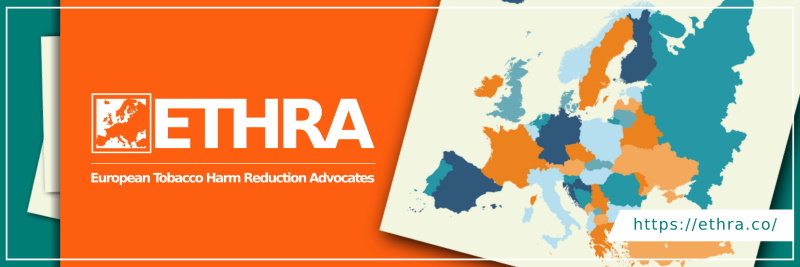Vapers Digest 16th January

Monday’s News at a glance:
Metal Risk Overblown – Rates Prove Opponents Wrong – Misguided Vaping Efforts – India needs to adopt tech to cut down on smoking – Bloomberg Philanthropies and the Robert Wood Johnson Foundation – Unpacking the Timcast Vaping Debacle – Nicotine Science and Policy Daily Digest
Metal Risk Overblown
Dave Cross – Planet of the Vapes
Professor Soulet and Professor Sussman have produced a paper that is a critical review of studies claiming to have found heavy metal toxic risks in e-cigarette vapour. The pair are recognised as leading experts in vape related research. They found evidence that research teams which found a toxic risk had adopted poor research methodology that led to errors, produced results divorced from real world vaping, or overestimated exposure levels.
Heavy metals can poison by building up in the soft tissues of the body. Many of them are essential to bodily functions in small amounts but pose a hazard when they build up. Primary metals that cause concern:
Rates Prove Opponents Wrong
Dave Cross – Planet of the Vapes
The falling youth vaping rates prove activists wrong, says the Coalition of Asia Pacific Tobacco Harm Reduction Advocates (CAPHRA). A new survey from the United States’ Centres for Disease Control and Prevention (CDC) and Food & Drug Administration (FDA) which suggests that youth vaping rates appear to be dropping, compared to pre-pandemic levels.
“Alarm bells about a United States’ youth vaping epidemic have now been proven to be false,” says Nancy Loucas, Executive Coordinator of CAPHRA.
“CAPHRA has long been calling out Bloomberg’s anti-vaping and anti-nicotine activism. We now have government data that completely contradicts their claims of an exploding youth vaping epidemic,” added Ms Loucas.
Misguided Vaping Efforts
May Have Led to Slight Increase in Youth Smoking in Virginia
Lindsey Stroud – Independent Women’s Forum
The Virginia Department of Health recently published the results of the Commonwealth’s 2021 Youth Risk Behavior Survey (YRBS). While there is welcoming news that youth vaping has declined since peaking in 2019, and high school use of traditional tobacco products is down, there has been an increase in combustible cigarette use among middle school students in the Old Dominion.
According to the YRBS, among high school students in 2021, 2.8% reported current use of combustible cigarettes, defined as having used a product on at least one occasion in the 30 days prior to the survey. Less than 1% reported frequent (20 days or more) and/or daily use. These are some of the lowest rates recorded among high schoolers in Virginia and between 2011 and 2021, current combustible cigarette use declined by over 81%.
Today is the final day of the Dutch consultation on banning nicotine pouches, so there is still time to add your submission.
Consultation page: https://t.co/aSrAp6Dgjw
See submissions from ETHRA: https://t.co/i3KYWorLNP
And @Eu4Snus :https://t.co/lP9GwjyCNu https://t.co/xSwqSfhP0O
— European Tobacco Harm Reduction Advocates (@europethra) January 16, 2023
India needs to adopt tech …
To cut down on smoking – Shantanu Guha Ray
Suggestions are filling the tables of the Finance Minister for the annual budget, economists and experts are offering their point of views. Among them, a handful have suggested increased taxes on tobacco products, ostensibly because—claim that pack of economists—it will ensure better health of citizens, and, more importantly, help the Indian government’s vision of a five trillion-dollar economy by 2025.
It is like missing the tree for the woods, increased taxes of tobacco products will burden the companies, put users at discomfort and continue to keep India away from technology that is being practiced across the world to curb smoking.
India is the world’s second largest consumer of tobacco behind China. The Indian tobacco market is worth $30 billion. More taxes would mean more revenue to the government but it is certainly not the best harm reduction alternative.
How Bloomberg Philanthropies …
And the Robert Wood Johnson Foundation Help Big Tobacco
The war on vaping peaked during the Obama administration and though the names behind it were groups you expect to be promoting public health – the U.S. CDC, American Lung Association and more – the funding behind many of those efforts may be two groups that are more interested in promoting nicotine patches and gums for Big Pharma than saving the lives of smokers.
It’s a mistake for anyone to undermine a smoking cessation and harm reduction tool and it increasingly looks like it can only be financially motivated. The first component of quitting smoking is obviously desire. You have to want to live more than you want a cigarette. People must be able to endure the physical craving prevalent with both alcohol and cigarettes, and the social aspects, the friend circle and the daily routine parts of it.
Unpacking the Timcast Vaping Debacle
RegWatch
Earlier this week, fans of Tim Pool and his live YouTube show Timcast IRL may have been shocked when a conversation about obesity and the food pyramid veered into a discussion about vaping that amplified almost every anti-vaping myth and stereotype pushed by public health.
It was an astonishing amount of misinformation.Joining us today to unpack the Timcast vaping debacle is Dimitris Agrafiotis a.k.a. the VapinGreek. He’s a global advocate for vaping and the former executive director of the Tennessee Smoke Free Association.
On this Day…2022
A look back at how things have moved on or otherwise…
FDA Sets a “Very Low” Bar…
For Favored Tobacco Products – Brad Rodu
The U.S. Food and Drug Administration on December 23 announced it had “authorized the marketing of 22nd Century Group Inc.’s ‘VLN [Very Low Nicotine] King’ and ‘VLN Menthol King’ combusted, filtered cigarettes as modified risk tobacco products (MRTPs), which help reduce exposure to, and consumption of, nicotine for smokers who use them. These are the first combusted cigarettes to be authorized as MRTPs…”
I do not understand how these VLN cigarettes will meet the agency’s tough MRTP standard, which requires that products “significantly reduce harm and the risk of tobacco-related disease to individual tobacco users and benefit the health of the population as a whole taking into account both users of tobacco products and persons who do not currently use tobacco products.”
‘Secondhand Vaping’ Risks…
Don’t Justify Public E-cigarette Restrictions – Cameron English
A new study suggests that e-cigarette users (vapers) may harm the respiratory health of their friends and family via “secondhand vaping.” Before we draw any conclusions, the paper has some important limitations that restrict its relevance to the real world.
Evidence confirming the relative safety of vaping continues to build. Multiple studies have now clearly shown that e-cigarette use is far safer than traditional smoking and effective in helping many people give up combustible cigarettes. But what about the secondhand impacts of vaping? A study just published in BMJ Thorax claims that “Secondhand nicotine vape exposure” may be associated with increased risk of bronchitic symptoms and shortness of breath in young adults. The authors concluded that their









